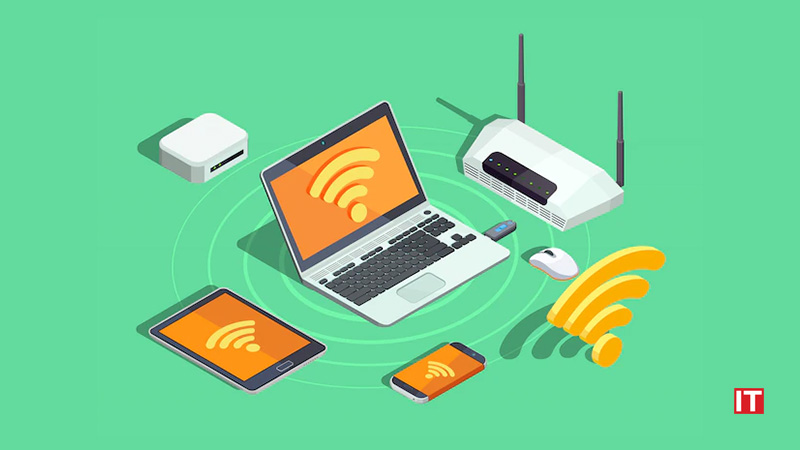Wireless Technologies – Paving the Road to Future
Wireless technologies are rapidly evolving and achieving numerous breakthroughs. The introduction of 5th generation mobile communication networks, or 5G, has become one of the most exciting and challenging topics in wireless research. 5G’s power allows it to connect to hundreds of billions of devices at extremely high throughput and low latency. 5G enables a true digital society in which everything is connected to the Internet, also known as the Internet of Things (IoT).
IoT is a technology that connects humans, devices, software, solutions, and platforms via the Internet. The development of IoT technology results in the birth of a slew of applications and solutions that benefit humanity.
Range of Wireless Technologies in IoT
While all IoT devices transmit and receive data wirelessly, they do so in different ways. There are various connectivity options, and some are better suited to specific applications than others. When deciding which option to use for a given application, factors such as battery life, coverage range, power requirements, and bitrate must all be considered.
Radio frequency
RF communication is all about sending data over radio frequencies. Wi-Fi, Zigbee, SigFox, and LoRa are all technologies that communicate at different frequencies and cover a wide range of distances. Wi-Fi is used for both short- and mid-range network communication, making it suitable for both smart homes and industrial applications. LoRaWAN, on the other hand, is best suited for long-distance communication needs, such as in Smart Cities.
Read More: Top 5 Data Mapping Tools to Enhance Business Efficiency
LoRaWAN
LoRaWAN is a powerful and rapidly evolving technology. It’s similar to Bluetooth, but it has a longer range for small data packets while consuming less power. LoRaWAN manages all connected devices’ communication frequencies, power, and data rate. As a result, LoRaWAN sensors communicate with a cellular gateway in order to send data to the cloud. Backhaul transport is required, and partners like Zipit can provide the necessary cellular support.
Because LoRaWAN has a long range, sensors can be widely distributed over a large area. Because these sensors are simple and designed for small data packets that are transmitted infrequently, they are ideal for irrigation management, leak detection, logistics and transportation management, and asset or equipment tracking. Keep a close eye on LoRaWAN as it evolves.
Wi-Fi
The Institute of Electrical and Electronics Engineers (IEEE) designated this as 802.11 as the most widely used communication standard. It operates in the 2.4-5GHz frequency range. Wi-Fi will play an even larger role in wireless transmission as the 5G network is deployed. WiFi, another well-known IoT wireless technology, has played a critical role in providing high-throughput data transfer in homes and for enterprises.
Wi-Fi can be very effective in the right circumstances, but it has significant limitations in terms of scalability, coverage, and power consumption. IoT devices are discouraged from being added to the same primary Wi-Fi networks as traditional employee computers or phones due to newer enterprise security practices.
Cellular
While cellular networks are unsuitable for the majority of IoT applications powered by battery-powered sensor networks, they are ideal for specific use cases such as connected cars or fleet management in transportation and logistics. In-car entertainment, traffic routing, advanced driver assistance systems (ADAS), fleet telematics, and tracking services, for example, can all rely on ubiquitous and high bandwidth cellular connectivity.
Cellular 5G with high-speed mobility and ultra-low latency is positioned to be the future of autonomous vehicles and augmented reality. In the future, 5G is expected to enable real-time video surveillance for public safety, real-time mobile delivery of medical data sets for connected health, and a number of time-critical industrial automation applications.
Bluetooth and BLE
BLE-enabled devices are typically used in conjunction with electronic devices, most notably smartphones, which act as a hub for data transfer to the cloud. BLE is now widely integrated into fitness and medical wearables, as well as Smart Home devices, allowing data to be easily communicated to and visualized on smartphones.
In Conclusion..
A thorough understanding of your requirements will help you find the best wireless technology for your IoT needs. In such a case, it is critical to weigh various factors such as power consumption, range, and bandwidth and rank their importance for your product. The Internet of Things (IoT) wave has already arrived, but widespread adoption of smart living necessitates foolproof security. To ensure the safety of consumer data, informed consent for data sharing is required.
































